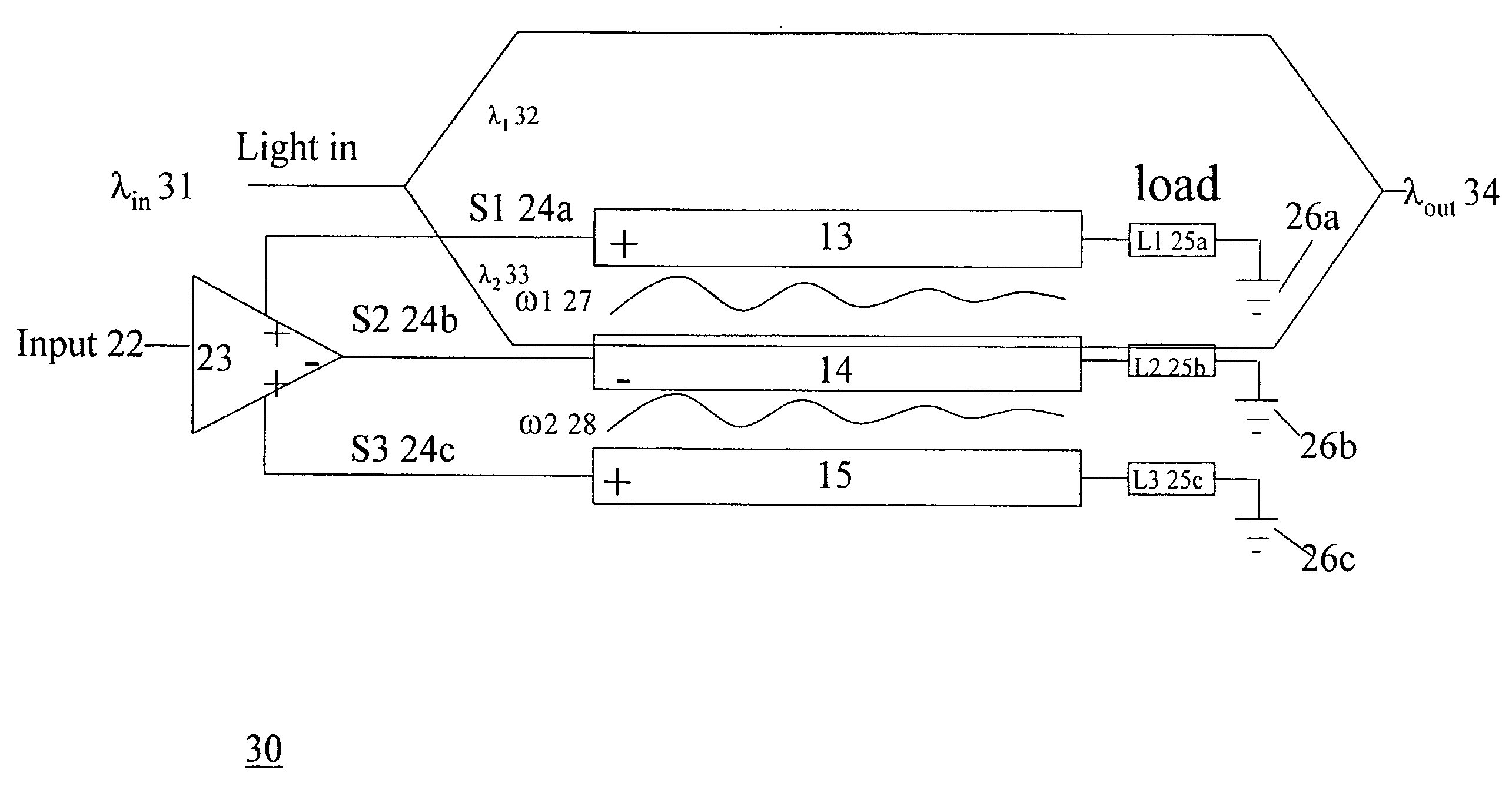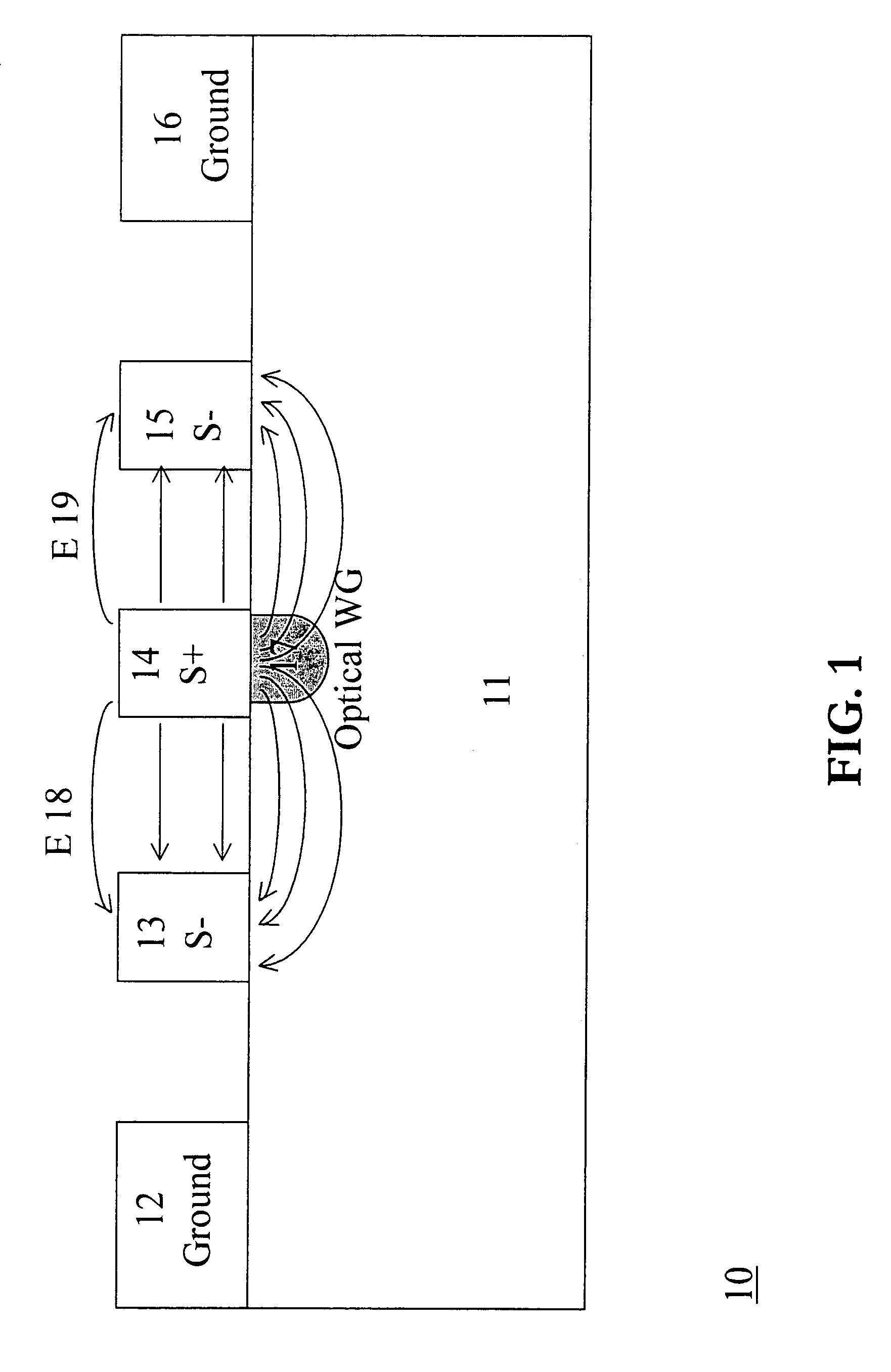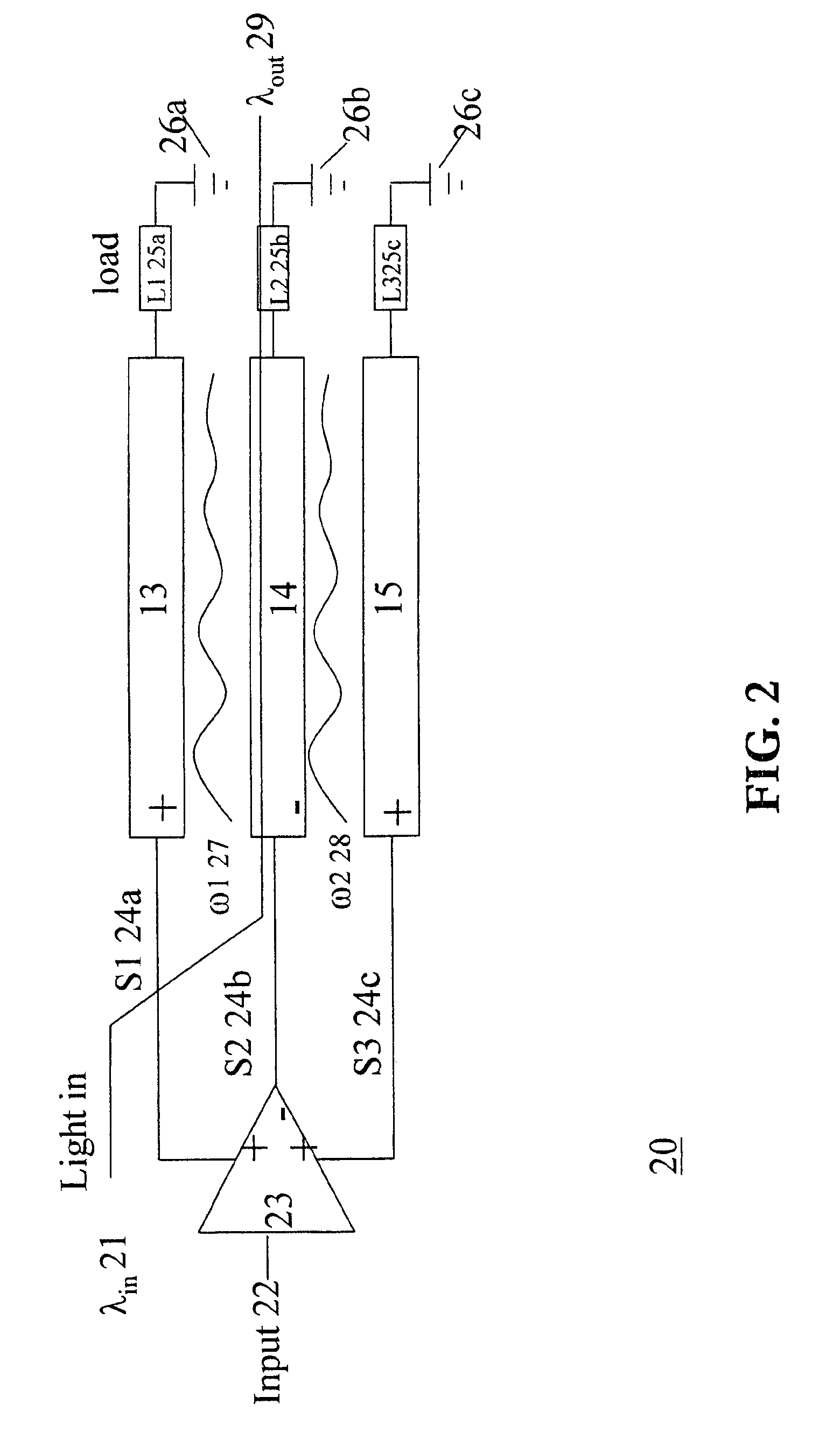Dual-electrode traveling wave optical phase shifters and methods
a traveling wave and optical phase shifter technology, applied in non-linear optics, instruments, optics, etc., can solve the problems of high required driving voltage, inability to increase the effective modulation length beyond the limit, and the required driving voltage cannot be increased beyond the limit, so as to reduce the thickness of the buffer layer, and improve the phase matching
- Summary
- Abstract
- Description
- Claims
- Application Information
AI Technical Summary
Benefits of technology
Problems solved by technology
Method used
Image
Examples
first embodiment
[0080]FIG. 8 is a circuit diagram illustrating two optical phase shifters 80 in constructing an optical switch, a modulator, or a Mach-Zehnder type interferometer. The two phase-shifters 80 has an upper phase shifter 81 and a lower optical phase shifter 70. The light signal input λin 82 is split into two paths, the λ1 83 and the λ2 84, which are re-combined to generate a the λout 85. In this embodiment, the light signal λ1 82 travels between a positive electrode 45b and a negative electrode 45c, while the light signal λ2 83 travels between the positive electrode 13 and the negative electrode 14. The amplifier 42 receives the input 41 and generates a first output to an amplifier 43, and a second output to the amplifier 23. The amplifier 43 receives then generates three electrical outputs through a transmission line S144a, a transmission line S244b, and a transmission line S344c. The transmission line S144a extends through a first electrode 45a to the load L1 or termination resistor 4...
second embodiment
[0081]FIG. 9 is a circuit diagram illustrating a two phase-shifters in constructing an optical switch, a modulator, or a Mach-Zehnder type interferometer. The light signal input λin 91 is split into two paths, the λ1 92 and the λ2 93, which are re-combined to generate a the λout 94. In this embodiment, the light signal λ1 82 travels between a negative electrode 45a and a positive electrode 45b, while the light signal λ2 83 travels between the negative electrode 14 and the positive electrode 15.
third embodiment
[0082]FIG. 10 is a circuit diagram illustrating two optical phase shifters 100 in constructing an optical switch, a modulator, or a Mach-Zehnder type interferometer. The light signal input λin 101 is split into two paths, the λ1102 and the λ2103, which are re-combined to generate a λout 104. In this embodiment, the light signal λ1102 travels between the negative electrode 45a and the positive electrode 45b, while the light signal λ2103 travels between the negative electrode 13 and the positive 15 electrode 14.
PUM
| Property | Measurement | Unit |
|---|---|---|
| thickness | aaaaa | aaaaa |
| width | aaaaa | aaaaa |
| polarity | aaaaa | aaaaa |
Abstract
Description
Claims
Application Information
 Login to View More
Login to View More - R&D
- Intellectual Property
- Life Sciences
- Materials
- Tech Scout
- Unparalleled Data Quality
- Higher Quality Content
- 60% Fewer Hallucinations
Browse by: Latest US Patents, China's latest patents, Technical Efficacy Thesaurus, Application Domain, Technology Topic, Popular Technical Reports.
© 2025 PatSnap. All rights reserved.Legal|Privacy policy|Modern Slavery Act Transparency Statement|Sitemap|About US| Contact US: help@patsnap.com



